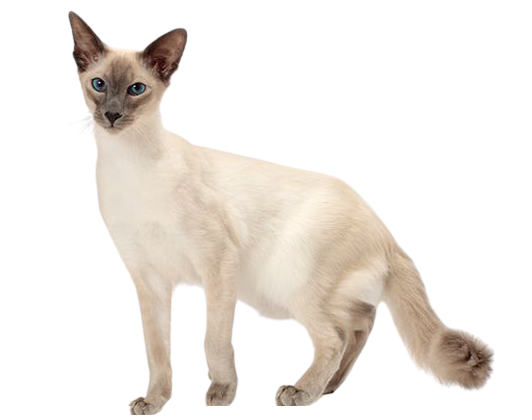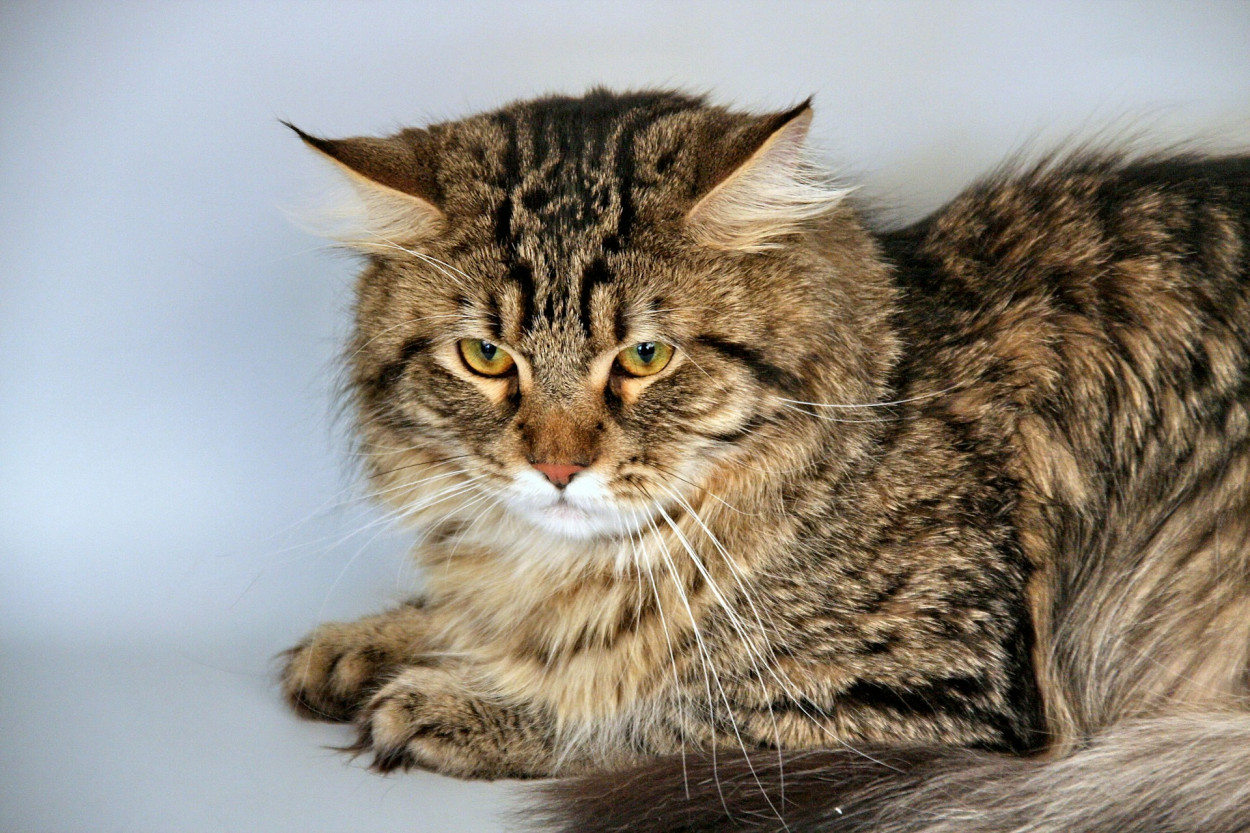Breed Information
| Popularity/Rank | 29 |
|---|---|
| Name | Balinese |
| Other names | Long-haired Siamese |
| Origin | United States |
| Size | Small |
| Coat | Silky, Soft, Undercoat, Long Hair |
| Lap Cat | No |
| Lifespan | 10 to 15 years |
| Temperament |
Intelligent, Playful, Affectionate Intelligent: The Balinese cat is an intelligent breed that is quick to learn new tricks and games. They are also known for their playful nature, and will often keep their owners entertained with their antics. These cats are also very affectionate, and will enjoy spending time cuddling and being petted. |
| Weight | Female: 6 - 8 pounds, Male: 7 - 11 pounds |
| Colors | Chocolate, Cream, Lilac, Red, Tortoise Shell, Blue |
| Kitten Prices |
USD $800 - $1500
When it comes to the price of a Balinese kitten, there are a few things that you need to take into consideration. The first is the reputation of the breeder. A reputable breeder is going to charge more for their kittens because they have a good reputation and they are in high demand. However, this does not mean that you should not consider buying from a less reputable breeder. There are still many good breeders out there who charge less for their kittens. The second thing that you need to take into consideration is the quality of the kitten. A higher quality kitten is going to cost more than a lower quality kitten. This is because higher quality kittens are less likely to have health problems and they will be able to provide you with years of companionship. The third thing that you need to take into consideration is the price of the parents of the Balinese kitten. If the parents are expensive, then the kitten is going to be more expensive as well. This is because the parents have been bred for their good qualities and they will pass these qualities on to their offspring. So, when it comes to choosing a Balinese cat, you need to take all of these factors into consideration. You also need to decide what your budget is and how much you are willing to spend on your new companion. |
Breed Characteristics
| Adaptability | |
|---|---|
| Affection Level | |
| Child Friendly | |
| Dog Friendly | |
| Energy Level | |
| Grooming | |
| Health Issues |
Feline infectious peritonitis, Feline leukemia, Feline immunodeficiency virus, Rabies, Ringworm Is Balinese cat Hypoallergenic? The Balinese cat is a long-haired breed of domestic cat with Siamese-style point coloration and blue eyes. They are also known as the "long-haired Siamese" in the United Kingdom. The Balinese is a natural mutation of the Siamese cat. Balinese are gentle, loving, intelligent cats with a playful disposition, and are active cats that enjoy a good game. Many Balinese enjoy playing fetch, and will retrieve small toys thrown for them. Feline infectious peritonitis (FIP) is a viral disease that affects cats. The virus that causes FIP is a member of the coronavirus family, which includes the viruses that cause the common cold and SARS. FIP is a serious disease that can be fatal, and there is no cure. Treatment is typically supportive, and focuses on relieving symptoms and supporting the cat's immune system. Feline leukemia is a serious viral disease that can be fatal. The virus that causes feline leukemia is a member of the retrovirus family, which includes the viruses that cause HIV and AIDS. There is no cure for feline leukemia, but treatment is available to help manage the disease and extend the cat's life. Feline immunodeficiency virus (FIV) is a viral disease that affects cats. The virus that causes FIV is a member of the retrovirus family, which includes the viruses that cause HIV and AIDS. FIV is a serious disease that can be fatal, and there is no cure. Treatment is typically supportive, and focuses on relieving symptoms and supporting the cat's immune system. Rabies is a viral disease that affects mammals, including cats. The virus that causes rabies is a member of the lyssavirus family. Rabies is a serious disease that can be fatal, and there is no cure. Treatment is typically supportive, and focuses on relieving symptoms and supporting the cat's immune system. Ringworm is a fungal infection that affects the skin, hair, and nails. Ringworm is not a serious disease, but it can be uncomfortable for the affected cat. Treatment typically involves antifungal medications, and the infection usually clears up within a few weeks. |
| Intelligence | |
| Shedding | |
| Social Needs | |
| Stranger Friendly | |
| Vocalization | |
| Health Care |
The Balinese cat is a long-haired breed of domestic cat with Siamese-style point coloration and sapphire-blue eyes. Balinese cats are medium-sized, weighing 6 to 12 pounds (2.7 to 5.4 kg). They are very active, playful, and vocal.
The Balinese cat is a long-haired breed of domestic cat with Siamese-style point coloration and sapphire-blue eyes. Balinese cats are medium-sized, weighing 6 to 12 pounds (2.7 to 5.4 kg). They are very active, playful, and vocal. Health care for a Balinese cat is similar to that of other long-haired breeds. The coat should be brushed regularly to prevent mats and tangles. The coat may also need to be trimmed or clipped periodically to keep it looking neat. Balinese cats are prone to dental problems, so regular brushing of the teeth is recommended. They are also susceptible to ear infections, so the ears should be checked regularly and kept clean. |
History
The Balinese cat is a long-haired breed of domestic cat with Siamese-style point coloration and sapphire-blue eyes. The Balinese is also known as the Purebred Long-haired Siamese, since it originated as a natural mutation of that breed and shares a common ancestry. In the early 20th century, long-haired cats from Asia were imported into North America and Europe, where they became popular pets. Some of these cats were later exported back to Asia, where they became the ancestors of the modern Balinese breed.
The Balinese breed almost went extinct in the 1970s due to competition from other long-haired breeds such as the Persian and Himalayan. However, dedicated breeders worked to preserve the Balinese and promote it as a unique breed distinct from other long-haired cats. The Balinese is now recognized by most major cat registries and has become one of the most popular long-haired breeds in North America and Europe.
The Balinese is a medium-sized cat with a slender body and long legs. The coat is silky and medium in length, with pointed coloration in seal, chocolate, blue, lilac, red, cream, or tortoiseshell points. The eyes are large and almond-shaped, with a vivid blue color. The head is wedge-shaped with prominent cheekbones, and the ears are large and pointed. The tail is long and tapering.
While the Balinese shares many physical features with the Siamese breed, it is distinguished by its longer coat and more laid-back personality. Balinese are affectionate cats that enjoy human companionship but are not as demanding as their Siamese cousins. They are intelligent cats that can be trained to perform tricks or behaviors on cue.
Description
The Balinese cat is a beautiful, long-haired breed that is closely related to the Siamese. The most notable difference between the two breeds is the coat of the Balinese, which is silky and flowing, while the Siamese coat is short and sleek. The Balinese also has a plumed tail that is carried upright, while the Siamese tail is thinner and hangs down. Both breeds have blue eyes and pointed coloration. The Balinese comes in many colors, including seal point, blue point, chocolate point, and lilac point.
The lifespan of a Balinese cat is around 12-14 years. They are a medium-sized breed, with males weighing 8-12 pounds and females 6-10 pounds. They are not a particularly active breed, but they do enjoy playing and climbing.
The personality of a Balinese cat is very loving and affectionate. They are very bonded to their human family and love to be in close proximity to them. They are also very social cats and enjoy being around other cats and animals. They are not particularly shy or timid, but they do have a gentle nature.
Balinese cats are very friendly with other cats, dogs, children, and other animals. They do not have any aggression issues and get along well with everyone they meet. They are also very adaptable cats and can adjust to new environments easily.
The health of a Balinese cat is generally good. However, like all breeds of cats, they are susceptible to certain health conditions such as respiratory problems due to their short faces (brachycephalic), heart disease, kidney disease, diabetes mellitus, cancer, feline infectious peritonitis (FIP), feline leukemia virus (FeLV), feline immunodeficiency virus (FIV), ringworm infection (dermatophytosis), gingivitis/stomatitis complex (GSC), pyruvate kinase deficiency (PKD), hip dysplasia ,and elbow dysplasia . It's important to take your Balinese cat to the vet regularly for checkups and vaccinations in order to prevent these health problems from occurring or catching them early if they do occur





